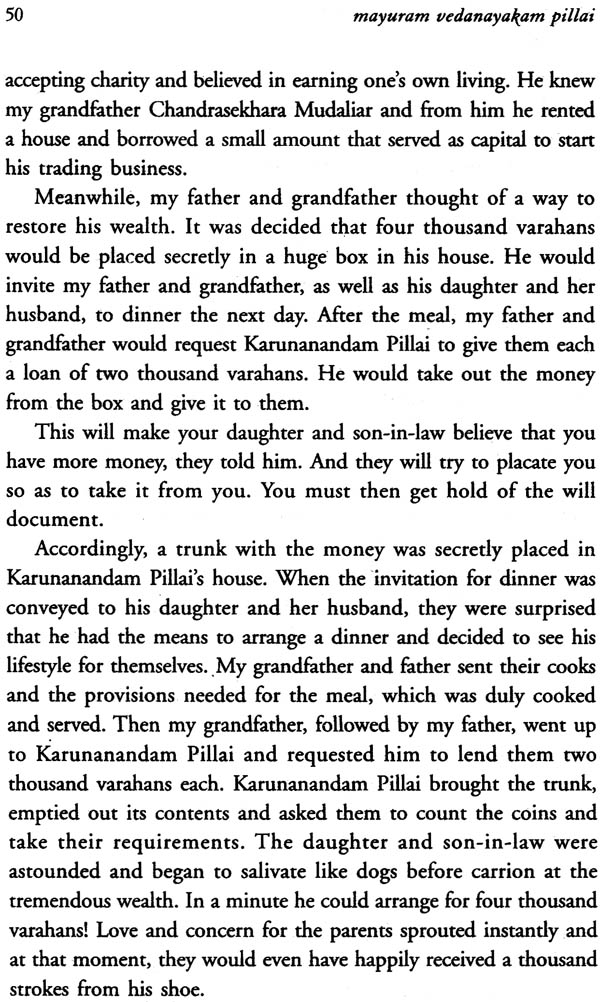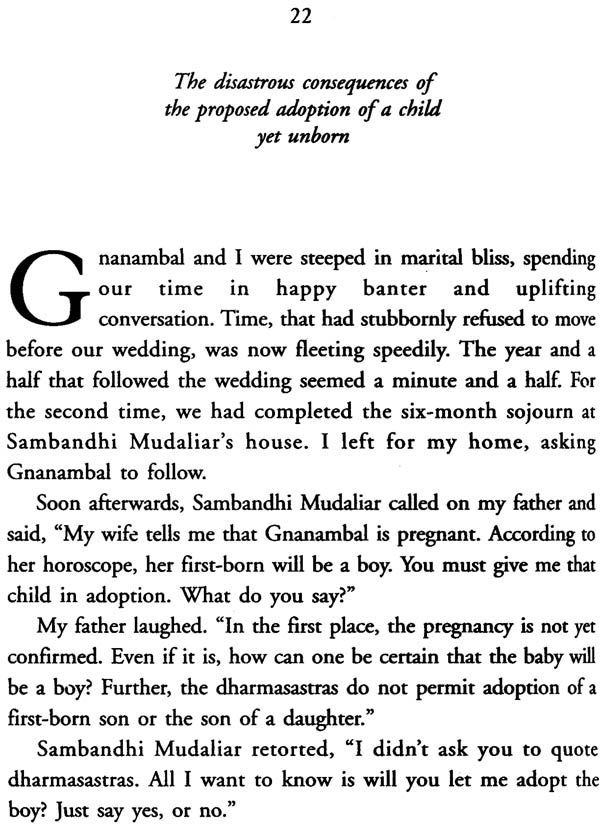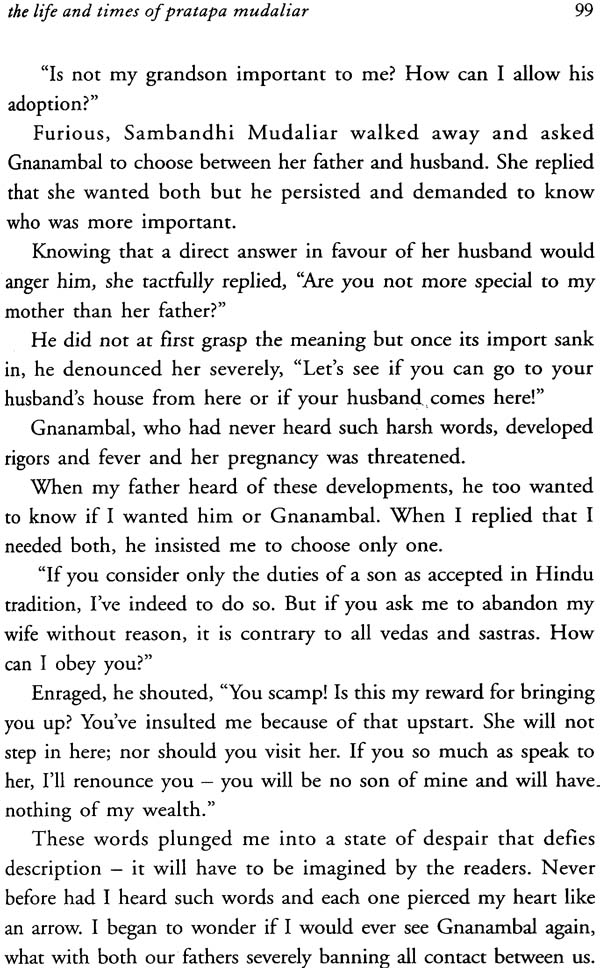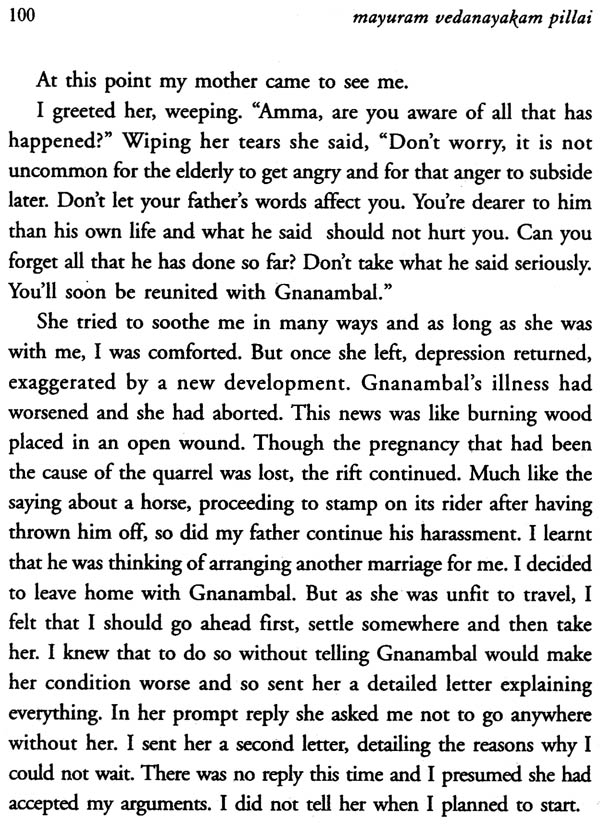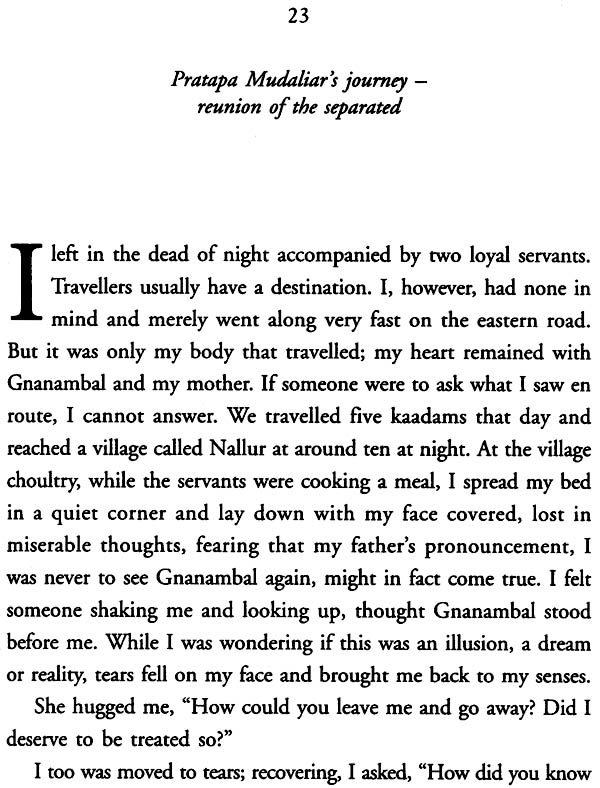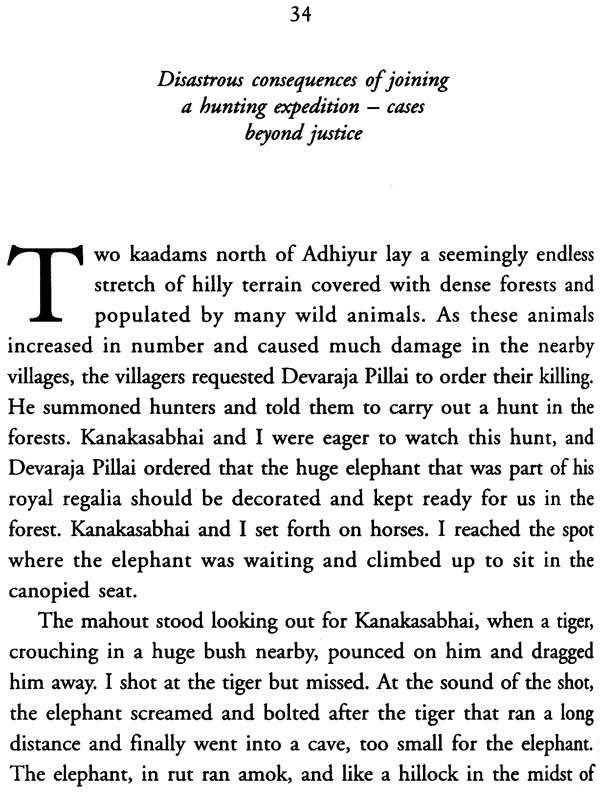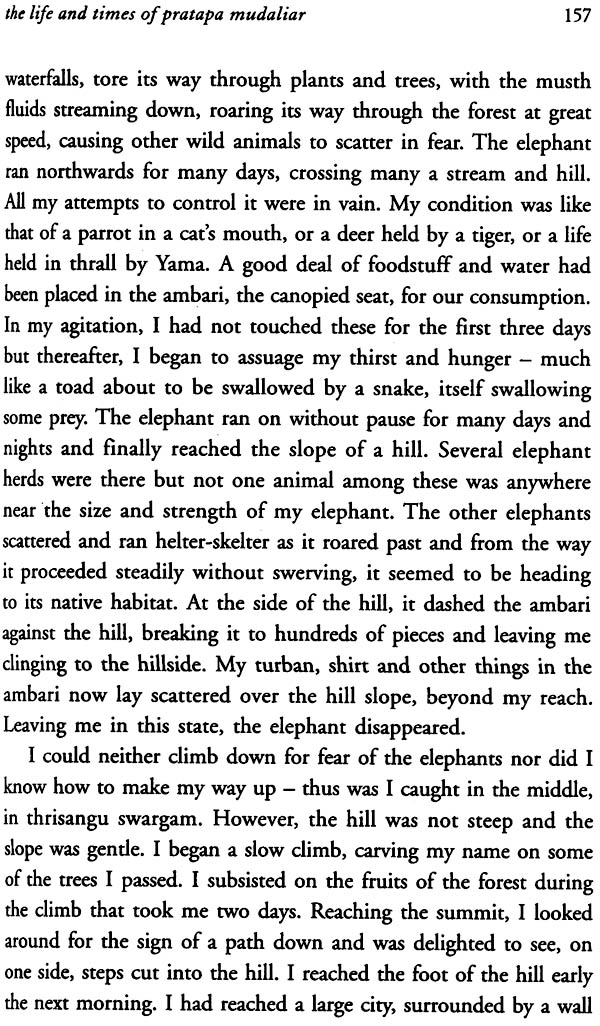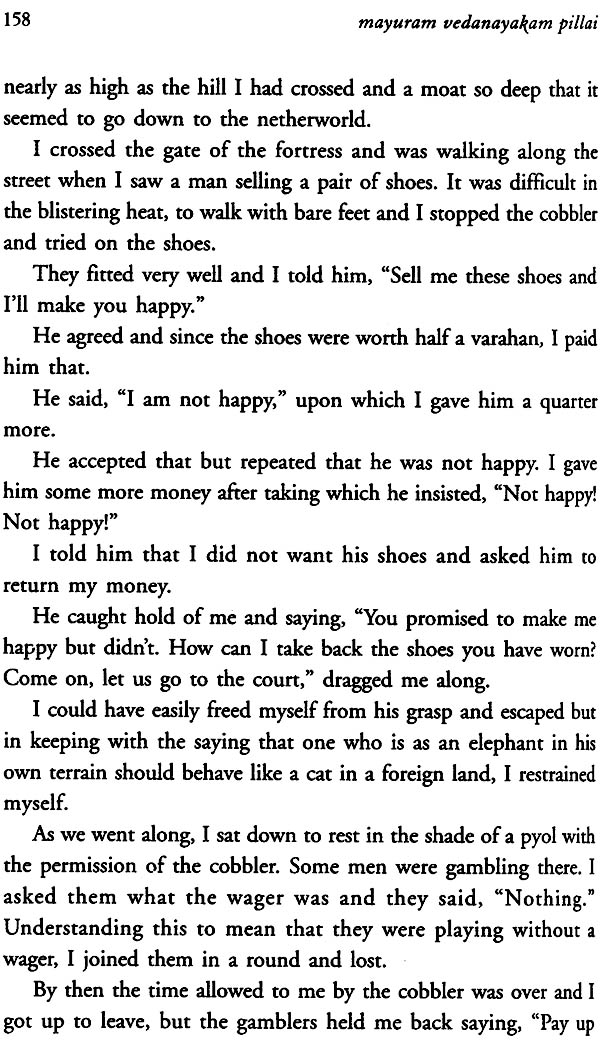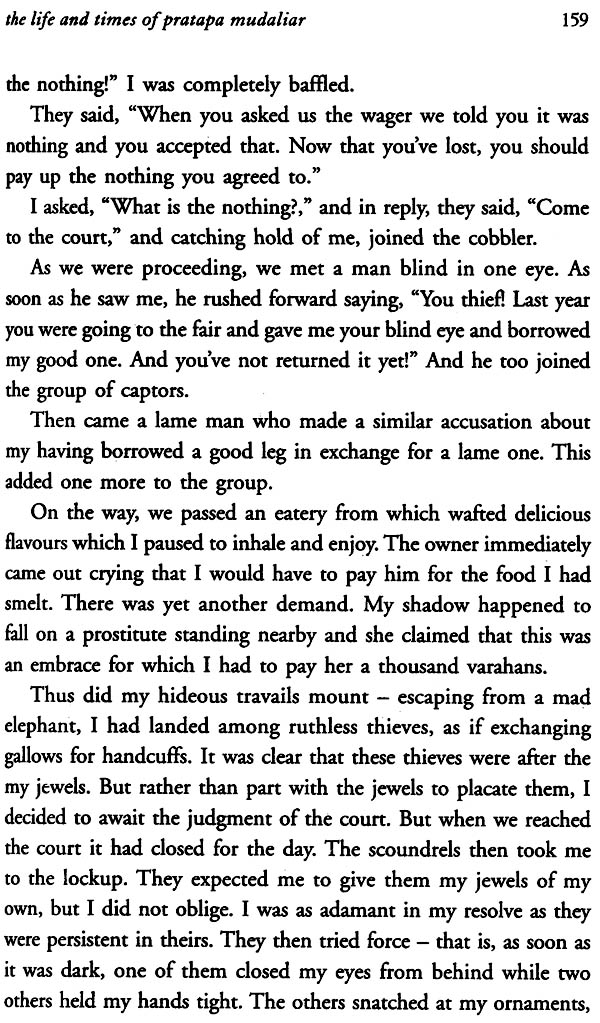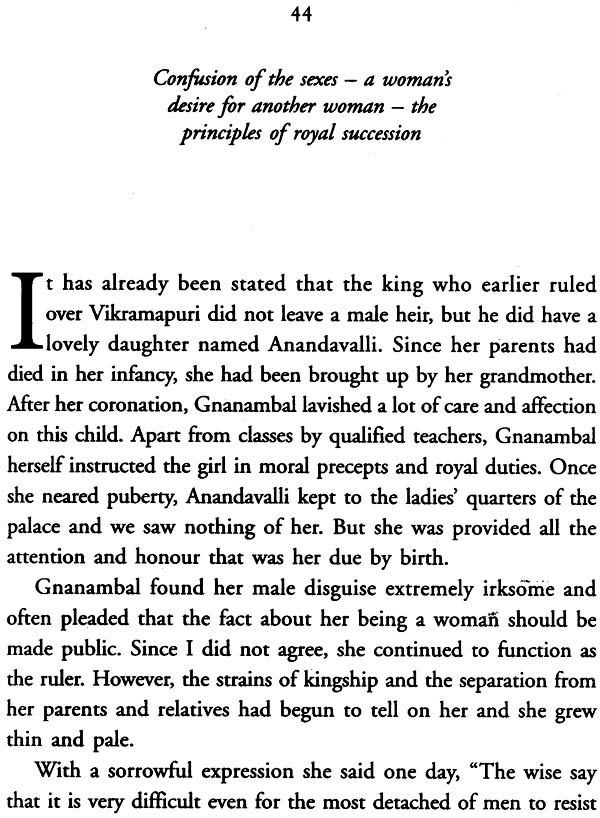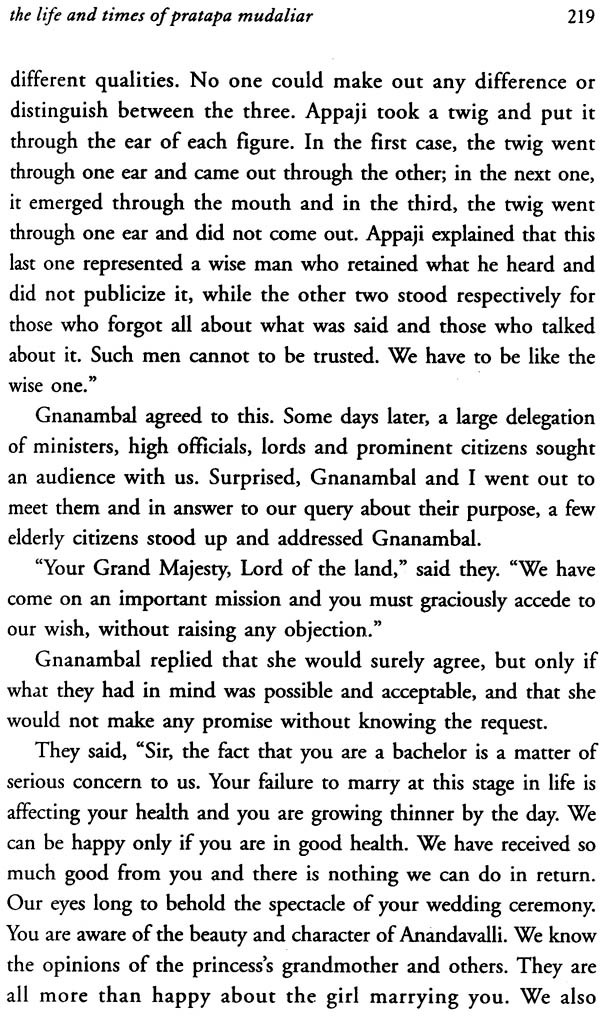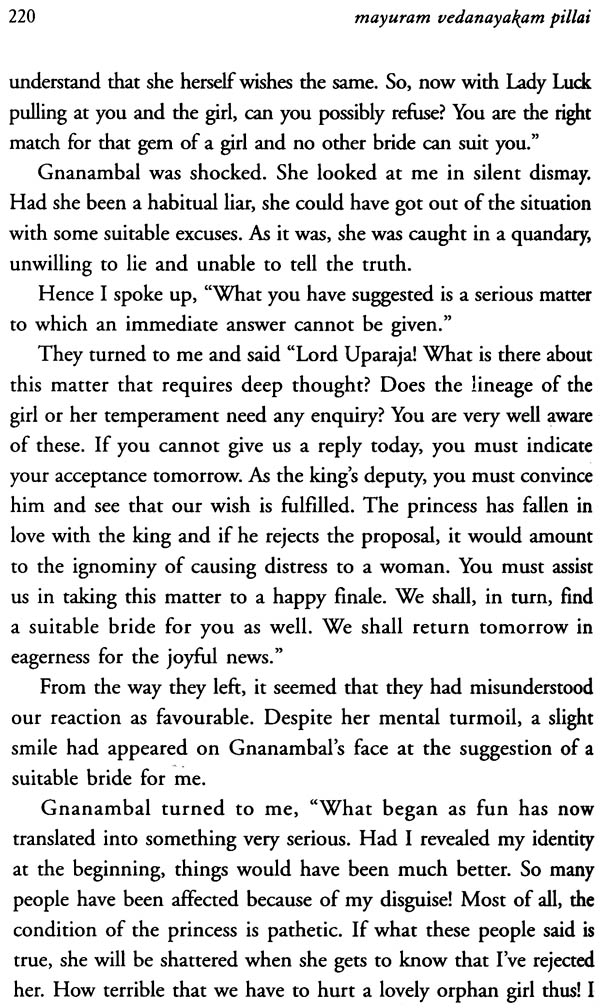
The Life and Times of Pratapa Mudaliar
Book Specification
| Item Code: | NAI399 |
| Author: | Mayuram Vedanayakam Pillai and Meenakshi Tyagarajan |
| Publisher: | Katha Books |
| Language: | English |
| Edition: | 2005 |
| ISBN: | 9788189020422 |
| Pages: | 280 |
| Cover: | Paperback |
| Other Details | 8 inch X 5.5 inch |
| Weight | 300 gm |
Book Description
About the Book
Published more than 125 years ago, The Life and Times of Pratapa Mudaliar; is an adventurous journey to the realm of folk tales and fables, mythology and morality A colourful expedition from one story to another, it moves from humour to satire, from failure to success, from tears to laughter, Splendidly translated by Meenakshi Tyagarajan and with an Afterword by Sascha Ebeling, Katha proudly presents the very first Tamil novel.
Translator’s Note
The publication of Pratapa Mudaliar Charithiram in 1879 was an event of significance in the history of Tamil literature marking the entry of a new genre, the novel. However, the author Vedanayakam Pillai, Magistrate of Mayuram, set about writing the book not so much with the zeal of a pioneer as that of a missionary. He loved Tamil deeply and was greatly concerned by the paucity of prose works in the language. At the same time, various evils that were becoming glaringly prominent in a society in the process of change under colonial rule caused him anguish. He saw in Tamil prose a vehicle for advocating and engineering social reform. He had already written two prose works on moral precepts, women’s education and liberation from the bonds of tradition. He now turned to what he termed “prosaic fiction,” a form that would simultaneously entertain and educate.
These twin objectives have made their clear impact on the structure, form and style of the novel. The modern reader may not see this as a “novel,” realistic and credible. But this has to be viewed firstly in the background of a general condition - the genre was yet to take root in the literary tradition and the language yet to adapt to its needs. The book may hence be seen as something of an experiment and in his original English Preface, the author sought “the indulgence of the public” for the possible shortcomings in his “novel attempt.” Secondly, with the tasks he had set for himself, the author had above all to entice the new reader. This he does not by depicting the society of his day but with the age-old “escapist” method of straight forward story telling, leading the reader along with a string of tales and tales within tales - a mixture of drama, adventure and comedy - to finally applaud the moralistic conclusions embedded in the plots, the conversations and characterization.
Vedanayakam Pillar’s style suits this approach. It is a simple, direct style, colloquial rather than classical, avoiding stilted ornamentation and with very little by way of description, either of characters or of the setting. However, there is heavy reliance on Sanskrit words, many of which are not in ordinary use today and not readily understood. Most of the stories are as narrated by a character, in long sentences, liberally illustrated with proverbs, homely aphorisms and nuggets of folk wisdom. These, were the features that required special care in the course of translation as my objective was readability - in English - without compromising fidelity to the original, in letter or spirit. Long sentences had necessarily to be shortened with some pruning and illustrative sayings etcetera retained with their original flavour.
Apart from the stories, there are some chapters in the book devoted in their entirety to presenting the author’s strong opinions - through the voice of a character - on some social, institutional and political issues of the day, such as the promotion of Tamil and its official use; the condition of the legal profession; the nature and functions of an ideal ruler and the requirements of good governance. There is some repetition of arguments and reiteration of objectives in these chapters and selective deletions and editing were necessary.
Pratapa Mudaliar Charithiram met with an appreciative and widening readership from the start. The book held appeal for all age groups through the years and it was frequently prescribed as a text in college courses. Evidence of its enduring popularity is the pictorial presentation of two episodes from the book by Amar Chitra Katha more than a hundred years after its appearance. There were several editions and reprints with some changes, detailed in the “Afterword.” This translation has followed the New Century Book House edition of 1994 except for the inclusion of the chapter headings, which appeared in the early editions but were dropped later. These have been taken from the second edition published in 1885. I am grateful to Sascha Ebeling of the University of Chicago, for allowing the use of his copy of that edition as also for contributing the scholarly essay on the book and its author, included as an “Afterword” at the end of this book. I am also grateful to Katha for their continued interest in early Tamil novels.
Contents
| Translator’s Note |
|
| The Life and Times of Pratapa Mudaliar | 9 |
| Afterword | 239 |
| Bibliography |
|


